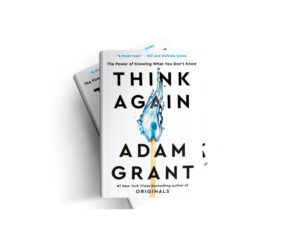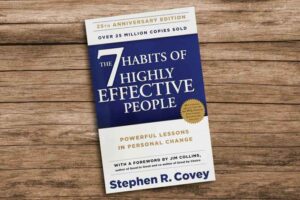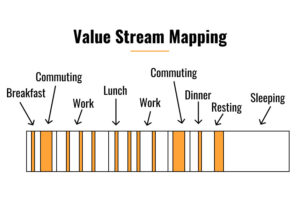Download this executive summary in PDF: Ultralearning by Scott Young
Ultralearning: A strategy for acquiring skills and knowledge that is both self-directed and intense.
Chapter 1: Can You Get an MIT Education Without Going to MIT?
- This is the challenge Scott Young gave himself, learning thirty-two classes within one year.
- Being fluent in a new foreign language within three months, winning a trivia competition, or building a video game alone are other kinds of ultralearning challenges.
Chapter 2: Why Ultralearning Matters
- With new technologies and competition, learning new skills is key to remaining relevant in the market.
- While tuition is skyrocketing, the higher education system fails to teach the skills required for high-skilled jobs.
- With the internet, unlimited knowledge is easily accessible to all.
- Learn a new skill to transition to a new career.
- Gain confidence knowing you are capable of learning new skills.
- Talent plays an important part in ultralearning but average persons can also benefit from the practical advice.
- Manage your time to practice ultralearning: new part-time projects, learning sabbaticals, and reimagining existing learning efforts.
Chapter 3: How to Become an Ultralearner
- METALEARNING: FIRST DRAW A MAP. Start by learning how to learn the subject or skill you want to tackle. Discover how to do good research and how to draw on your past competencies to learn new skills more easily.
- FOCUS: SHARPEN YOUR KNIFE. Cultivate the ability to concentrate. Carve out chunks of time when you can focus on learning, and make it easy to just do it.
- DIRECTNESS: GO STRAIGHT AHEAD. Learn by doing the thing you want to become good at. Don’t trade it off for other tasks, just because those are more convenient or comfortable.
- DRILL: ATTACK YOUR WEAKEST POINT. Be ruthless in improving your weakest points. Break down complex skills into small parts; then master those parts and build them back together again.
- RETRIEVAL: TEST TO LEARN. Testing isn’t simply a way of assessing knowledge but a way of creating it. Test yourself before you feel confident, and push yourself to actively recall information rather than passively review it.
- FEEDBACK: DON’T DODGE THE PUNCHES. Feedback is harsh and uncomfortable. Know how to use it without letting your ego get in the way. Extract the signal from the noise, so you know what to pay attention to and what to ignore.
- RETENTION: DON’T FILL A LEAKY BUCKET. Understand what you forget and why. Learn to remember things not just for now but forever.
- INTUITION: DIG DEEP BEFORE BUILDING UP. Develop your intuition through play and exploration of concepts and skills. Understand how understanding works, and don’t recourse to cheap tricks of memorization to avoid deeply knowing things.
- EXPERIMENTATION: EXPLORE OUTSIDE YOUR COMFORT ZONE. All of these principles are only starting points. True mastery comes not just from following the path trodden by others but from exploring possibilities they haven’t yet imagined.
Chapter 4: Principle 1 – Metalearning – First Draw a Map
- Metalearning: learn how to learn the skill.
- Metalearning map helps to learn faster and more effectively.
- In short term, do some research to define and select the materials.
- In the long term, adapt your pace and schedule according to what suits you best.
- Why? What is your motivation to learn? Is the skill a means to get a new job? Or do you learn a new language for an intrinsic reason?
- If it is a means to get a new job, interview some experts in the field before learning to be sure the skill is required.
- What? Concepts, Facts (what needs to be memorized), and Procedures (what needs to be practiced).
- How? Benchmarking (compare how other experts leaned it), Emphasize/Exclude Method (omit elements that don’t align with your goal).
- Planning should take around 10% of your total learning time.
Chapter 5: Principle 2 – Focus – Sharpen Your Knife
Problem 1: Failing to Start Focusing (aka Procrastinating)
Problem 2: Failing to Sustain Focus (aka Getting Distracted)
Distraction: Your environment, Your task, Your mind (negative emotion)
Problem 3: Failing to Create the Right Kind of Focus (adapt arousal level to the complexity of the task)
Chapter 6: Principle 3 – Directness – Go Straight Ahead
- Directness is the hallmark of most ultralearning projects.
- The opposite is classroom-style learning.
- Spend time doing the thing you want to become good at.
- The transfer of knowledge from one context to another context is not significant.
- Tie the knowledge to the context.
- Tactic 1: Project-Based Learning, produce something, you will learn how to produce that thing.
- Tactic 2: Immersive Learning, surround yourself with the environment in which the skill is practiced.
- Tactic 3: The Flight Simulator Method, use simulation to practice in a similar context.
- Tactic 4: The Overkill Approach, aim for a level that is higher than you target.
Chapter 7: Principle 4 – Drill – Attack Your Weakest Point
- Rate-determining step is the slowest part of a chain of reactions in chemistry.
- Direct-Then-Drill-Approach: first practice the skill directly, then isolate components that are rate-determining steps, and from there develop some drills to work on them specifically.
- Drill 1 Time Slicing: work on a specific part of a decomposed skill.
- Drill 2 Cognitive Components: drill only one cognitive component.
- Drill 3 The Copycat: copy the parts of the drill you don’t want to drill and focus only on the part you want to practice.
- Drill 4 The Magnifying Glass Method: spend more time on one component of the skill than you would otherwise.
- Drill 5 Prerequisite Chaining: practice a new skill then go back one step backward to learn the prerequisite (when learning a new language, practice a new phrase then study the grammar if you don’t know the prerequisite).
Chapter 8: Principle 5 – Retrieval – Test to Learn
- Free recall (trying to remember as much as they could without looking in the book) is the best technic to retrieve information from your mind.
- Difficulty to retrieve information is desirable if the person still manages to retrieve it.
- Forward-testing effect: taking an exam even if you have not prepared for it will enhance your capacity to learn better. Your mind will search for the answers to the questions.
- Learn to retrieve information that you will practice directly.
- Expose yourself to broader passive knowledge so you can easily search for it when needed to solve a problem.
- Tactic 1 Flash Cards: pair questions with answers.
- Tactic 2 Free Recall: write down what you just read/listen
- Tactic 3 The Question-Book Method: write questions that force you to restate the big idea of what you just learned.
- Tactic 4 Self-Generated Challenges: give yourself a practical challenge with what you just learned.
- Tactic 5 Closed-Book Learning: generate a concept map without looking consulting the source.
Chapter 9: Principle 6 – Feedback – Don’t Dodge the Punches
- Feedback is useful when it provides information to guide you in your future learning.
- Praise feedback is harmful.
- Be resolved to listen to uncomfortable feedback.
- Outcome feedback: tell how you are doing overall but no ideas as to what you are doing better or worse.
- Informational feedback: tell you what you are doing wrong but it doesn’t necessarily tell you how to fix it.
- Corrective feedback: best feedback, tell you what you are doing wrong and how to fix it.
- Know when to selectively ignore feedback.
- Tactic 1 Noise Cancellation: noise is caused by random factors, which you should not overreact to when trying to improve.
- Tactic 2 Hitting the Difficulty Sweet Spot: avoid situations that always make you feel good/bad about your performance.
- Tactic 3 Metafeedback: overall success of the strategy of your learning (learning rate, testing, grade).
- Tactic 4 High Intensity, Rapide Feedback: immersion helps to overcome the discomfort of feedback.
Chapter 10: Principle 7 – Retention – Don’t Fill a Leaky Bucket
- We forget because:
- Decay – forgetting with time
- Interference – overwriting old memories with new ones
- Forgotten cues – we still have the memories but we miss the cues to retrieve them.
- How can you prevent forgetting?
- Spacing: Repeat to remember
- Proceduralization: when you remember automatically by feeling instead of explicit retrieval of memory.
- Overlearning: additional practice beyond what is required to extend the memory.
- Mnemonics: translating abstracts into a picture or a spatial map.
Chapter 11: Principle 8 – Intuition – Dig Deep Before Building Up
- Rule 1 Don’t give up on hard problems easily: difficulty in retrieving answer make you remember better.
- Rule 2 Prove things to understand them: draw a bicycle, if you can draw it correctly it means you understand the mechanism.
- Rule 3 Always start with a concrete example
- Rule 4 Don’t fool yourself: Dunning-Kruger effect, when you lack knowledge about a subject, you cannot assess your abilities. Asking “dumb” questions protect you from fooling yourself into thinking you know something you don’t know.
- The Feynman Technique:
1. Pick a topic
2. Use simple language to explain it to someone unfamiliar with the topic.
3. If you are stuck, go back to your reference to find the answer. - You can apply this technique to things you don’t understand at all, for problems you can’t seem to solve, for expanding your intuition.
Chapter 12: Principle 9 – Experimentation – Explore Outside Your Confort Zone
- Experimentation is the key to mastery: experimenting with learning resources (book, class), experimenting with technique (pick a subtopic within the skill), experimenting with style (know the different styles that exist).
- The mindset of experimentation (growth mindset you can actively improve vs fixed mindset there is no point to improve a fixed trait, mindset is self-fulfilling).
- How to experiment:
- Tactic 1 Copy then create, by copying you deconstruct and understand why it works.
- Tactic 2 Compare methods side-by-side, you control the variables of the experiment.
- Tactic 3 Introduce new constraints, you renew the old methods.
- Tactic 4 Find your superpower in the hybrid of unrelated skills, two skills that don’t overlap may give you a distinct advantage.
- Tactic 5 Explore the extremes, you get access to more possibilities.
Chapter 13: Your First Ultralearning Project
Step 1: Do Your Research
- Prepare your metalearning in advance: What topic you’re going to learn and its approximate scope (start narrow then expand).
- The primary resources you are going to use (book, app, website, course, …).
- A benchmark for how others have successfully learned this skill.
- Direct practice activities.
- Backup materials and drills.
Step 2: Schedule Your Time
- By scheduling, you will prioritize your learning and build your motivation.
- Decide how much time you will commit.
- Set a consistent schedule that is the same every week.
- Decide the length of your project, shorter commitment is easier to stick with and break long commitment into shorter projects.
- Write your schedule in your calendar to avoid forgetting and conflicts.
- For the long project, do a pilot test of one week to adjust if necessary.
Step 3: Execute Your Plan
Are you slipping from your ideal plan?
- Metalearning: have I done the research?
- Focus: am I focused when learning?
- Directness: will I be able to practice what I am learning?
- Drill: am I spending time working on my weaknesses?
- Retrieval: how do I know if I can explain what I learned?
- Feedback: am I using feedback correctly?
- Retention: do I remember what I am learning in the long term?
- Intuition: do I understand what I am learning?
- Experimentation: how can I go beyond the basics?
Step 4: Review Your Results
- What went right? Can I refine and improve for the next projects?
- What went wrong? Did I plan adequately my project?
Step 5: Choose to Maintain or Master What You’ve Learned
- Maintenance (spend some time practicing or integrating the skill into your life)
- Relearning (relearning is faster than first-time learning)
- Mastery (dive deeper into the skill you have learned)
Alternative to Ultralearning: Low-Intensity Habits and Formal Instruction
- Alternative Strategy 1: Low-Intensity Habits (work best when the act of learning is mostly a process of accumulation).
- Alternative Strategy 2: Formal, Structured Education (acquire credentials, learning environment).
Download this executive summary in PDF: Ultralearning by Scott Young








